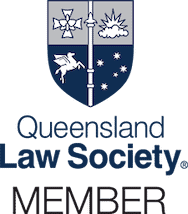Introduction to Whiplash Injury Compensation
Free Initial Claim Assessment
When you are dealing with the aftermath of a whiplash injury, navigating the legal landscape for compensation can be daunting. Our Free Initial Claim Assessment offers a straightforward and risk-free way to understand your options and the potential value of your claim. Book your Free Initial Claim Assessment here. Here are the key benefits of utilising our Free Initial Claim Assessment:
One of the most significant advantages of our Free Initial Claim Assessment is that it comes with no financial obligation. You can gain valuable insights into your case without worrying about upfront costs or consultation fees. This means you can explore your legal options with complete peace of mind.
During the initial assessment, you will have the opportunity to speak with our Principal and Accredited Personal Injury Specialist, Kate Denning, who specialises in whiplash claims. She can provide you with expert advice tailored to your specific situation, helping you understand the strengths and weaknesses of your case.
We know that your time is valuable, especially when you are recovering from an injury. Our Free Initial Claim Assessment is designed to be quick and convenient, providing you with essential information without lengthy delays. This helps you get started on your claim process promptly.
Many individuals are unaware of their legal rights and obligations following a whiplash injury. The Free Initial Claim Assessment provides a platform to educate you about your legal position, ensuring you are well-informed and prepared to assert your rights.
Understanding Whiplash Injuries:
Whiplash injuries typically result from car accidents and involve damage to the neck’s soft tissues. Early symptoms include pain, stiffness, and reduced mobility, which can lead to long-term complications if untreated. The word “whiplash” is a reference to how the injury occurred and not the injury itself.
Importance of Seeking Compensation:
Pursuing compensation ensures coverage for medical expenses, lost wages, and other related costs, aiding in comprehensive recovery and financial stability. Whiplash injuries should not be trivialised. These injuries can have long lasting effects.
How Whiplash Injuries Occur
Common Causes and Scenarios:
Whiplash often occurs during rear-end collisions, sudden stops, or impacts that forcefully jerk the head back and forth. Identifying these scenarios helps in substantiating claims. Examples of how whiplash injuries occur include:
- Rear-End Collisions: When a vehicle is hit from behind, causing the neck to jerk forward and backward suddenly.
- Head-On Collisions: Sudden deceleration forces can lead to whiplash, even without a rear impact.
- Side-Impact Collisions: Side impacts can cause the head to snap sideways, leading to neck strain.
- Sports Injuries: High-impact sports like football, rugby, or gymnastics can cause whiplash.
- Slips and Falls: Sudden falls can result in the head snapping back, leading to whiplash.
- Amusement Park Rides: Rapid acceleration and deceleration in roller coasters can cause neck injuries.
- Physical Assault: Being punched or shaken violently can result in whiplash.
- Occupational Hazards: Jobs involving heavy lifting or sudden movements can lead to neck injuries.
- Cycling Accidents: Sudden stops or impacts while cycling can cause whiplash.
- Recreational Activities: Activities like skiing or snowboarding where sudden falls or collisions occur.
Identifying Symptoms and Diagnosis:
Symptoms include neck pain, headaches, dizziness, and shoulder pain. Accurate diagnosis through medical examinations and imaging tests is crucial for a successful claim.
Here are some of the ways that whiplash injuries are diagnosed:
- Patient History: Detailed account of the accident and symptoms.
- Physical Examination: Checking for pain, tenderness, and range of motion.
- Neurological Tests: Assessing nerve function, strength, and reflexes.
- X-Rays: Identifying any fractures or dislocations.
- Magnetic Resonance Imaging (MRI): Detecting soft tissue injuries, including muscles and ligaments.
- Computed Tomography (CT) Scans: Providing detailed images of bones and soft tissues.
- Flexion-Extension X-Rays: Evaluating ligament instability or damage.
These methods help doctors accurately diagnose and treat whiplash injuries.
Steps to Take Post-Accident
After a whiplash injury, there are a number of important steps to take, including:
- Seek Medical Attention: Even if symptoms appear minor, it is important to document your symptoms to ensure proper treatment can be offered.
- Contact Police: For car accidents, a report should be made, regardless of who was at fault.
- Contact Your Insurer: If your property was damaged, contact your property damage insurer about whether a claim can be made.
- Seek Legal Advice: The key to success in most legal matters is seeking advice from the right lawyer at the earliest possible stage.
How Do You Prove Whiplash?
To prove that you have suffered whiplash, you should maintain detailed records of the accident, medical treatments, and any correspondence related to the injury. These documents are vital for building a strong compensation case.
Incident Related Documents and Information
Accident related information and documents that you can gather following a collision includes:
- Photographs: Pictures of the accident scene and the damage to the vehicles to illustrate the impact and what occurred. Photographs of surrounding and relevant street signage can also assist.
- Contact information: Exchange contact details with the other driver.
- Police traffic incident report number: You may not be able to get the actual police report and if not, get the traffic incident report number. It begins with “QP”.
- Insurance details: Ask the driver you believe to be at fault for their property damage insurer’s details, including the policy number (if possible). This will not necessarily be the same insurer as their compulsory third party insurer.
- Witness details: If possible, take the names and contact details of any witnesses to the accident.
Medical Related Documents
Medical related information and documents that you can gather following an accident includes:
- Hospital discharge summary: If you were admitted to hospital, you should have received a document which summarised your injuries and treatment.
- Medical certificate: Your treating health care provider should provide you with a medical certificate. For car accidents in Queensland, this is in a prescribed form.
- Photographs: Take photographs of your injuries to document their significance.
- Radiology reports: Keep reports provided to you by health care providers for any x-rays, MRIs or CT scans.
- Provider Treatment Plans: If you need physiotherapy or other treatment, ask your provider to prepare a treatment plan. For car accidents in Queensland, this is in a prescribed form.
Treatment and Recovery
Medical Advice and Treatment Options:
Treatment may include rest, physical therapy, pain management, and in severe cases, surgery. Adhering to prescribed treatment plans aids in recovery and strengthens the claim.
Prognosis and Long-Term Effects:
While many recover within a few weeks, some may experience chronic pain and disability. Understanding the long-term impact is essential for accurate compensation calculation.
Eligibility for Whiplash Compensation
Criteria for Making a Whiplash Claim:
If you’ve suffered a whiplash injury, understanding your eligibility for compensation is the first step towards securing the financial support you need for recovery. To be eligible to make a claim for whiplash compensation in Qld, you will need to demonstrate:
- Involvement in an Accident.
- Proof of Injury.
- Negligence of Another Party.
Time Limits and Legal Requirements:
Queensland law mandates specific time limits for submitting claims. Consulting with a lawyer ensures all deadlines and legal requirements are met. For more information on the time limits that apply to car accidents in Queensland, see our Guide for Qld CTP Claim Time Limits and Claim Timeframes.
Calculating Compensation Amounts
Factors Influencing Compensation:
Compensation is based on injury severity, medical expenses, lost income, and pain and suffering. Accurate documentation and legal expertise help in maximising payouts.
Examples of Previous Payouts:
Reviewing past cases provides insight into potential compensation amounts. Each case is unique, and outcomes vary based on individual circumstances. For more information about whiplash injury payouts, see our Guide to Getting a CTP Payout in Qld.
Legal Process of Making a Whiplash Claim
Choosing the Right Lawyer:
Select a lawyer experienced in personal injury and whiplash cases. Their expertise can significantly impact the success of your claim. Denning Insurance Law is a specialist personal injury and insurance law firm, led by one of Queensland’s most experienced personal injury lawyers, Kate Denning.
Steps in the Legal Process:
The legal process includes consultation, documentation, negotiation, and possibly court proceedings. Understanding each step prepares claimants for what to expect.
Regardless of how your injury occurred, in Queensland, the typical steps in a whiplash injury claim are:
- Submitting a Notice of Claim: This is a standard claim form. For workers’ compensation matters, workers should first, have an accepted statutory claim.
- Disclosure: Exchanging documents with the other party or insurer about the accident.
- Liability Determination: The party or insurer against whom the claim is made provides a written notice of its decision about whether they are at-fault.
- Independent Medical Examinations: Both parties can organise for reports to be obtained from experts.
- Compulsory Conference: This is a settlement conference where the parties come together and negotiate in a genuine attempt to resolve the claim.
- Litigation: If the claim cannot resolve at Compulsory Conference, the Claimant must file a claim in the Court.
- Litigated Mediation: This is a negotiation between the parties which is facilitated by an independent third party mediator.
- Trial: This is a hearing where all of the evidence is put before a Court and a judge decides the case.
Client Success Stories
Here are just a few of our client’s case studies:
- Michelle: Michelle achieved an out of Court settlement which was more than 15 times the insurer’s original offer to her.
- Peter: Peter achieved a six (6) figure out of Court settlement which was more than four (4) times his pre accident wage.
- John: John achieved a six (6) figure payout from the insurer, despite continuing in his pre-accident work.
What is the Average Whiplash Payout?
According to data from the Motor Accident Insurance Commission, the average payout for a “minor” injury, such as whiplash, for finalised claims from 1 July 2022 to 30 June 2023, was $82,100.
Frequently Asked Questions about Whiplash Compensation
What is my whiplash injury worth?
Every whiplash injury claim is assessed according to how the individual is affected. Compensation can be claimed under a number of different “heads of damage”. Settlements can range significantly from $5,000 through to several hundred thousand dollars. To find out about the potential value of your whiplash injury compensation claim, book an appointment with Denning Insurance Law to discuss.
Can I pay for my own treatment and be reimbursed?
Yes. If you have paid for your own treatment, we can seek reimbursement for that treatment on your behalf from the insurer or other party. If it cannot be reimbursed, we can claim the cost of the treatment as part of your overall claim for damages.
How long will I be off work with whiplash?
The time taken off by our clients varies depending on the severity of their symptoms, the progress of their recovery, their access to treatment and their pre-injury work. If you are no longer able to work in your pre-accident role because of your injuries, you can seek compensation for the loss of the income you could have earned.
How long does it take for whiplash to heal?
Recovery from whiplash varies considerably between individuals. We find that our clients can be “stable and stationary” from anywhere between three (3) and 12 months. However, individuals can have ongoing restrictions, pain and other conditions related to their original injury.
How do I know if my whiplash is serious?
Whiplash should not be trivialised and even a relatively minor injury can impact some individuals. However, signs that your whiplash injury may be more serious include:
- a fracture involving a 25% compression of 1 vertebral body.
- tingling or pins and needles on 1 or both sides of your body
- a sudden “electric shock” feeling in your neck
Can I settle my whiplash claim without a lawyer?
You can but we strongly urge anyone with a whiplash injury to seek legal advice before accepting a settlement. Do not risk accepting an amount of money in the short term which does not adequately compensate you for your injuries and ongoing symptoms. Without legal advice, you do not know what you are potentially entitled to.
Contact Us
Free Consultation and Contact Information:
Denning Insurance Law offers a free initial consultation and case appraisal in all whiplash injury compensation cases, with an Accredited Personal Injury Specialist. For an appointment, call (07) 3067 3025.
Whipash injuries can be complex and should not be trivialised. With an experienced law firm, like Denning Insurance Law, you can ensure that you maximise the damages recoverable for your injury, while being professionally represented and fully informed of your entitlements.





